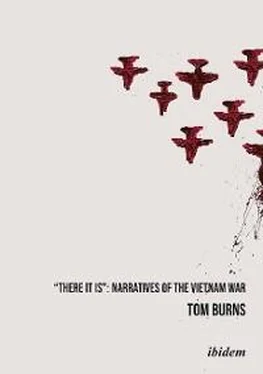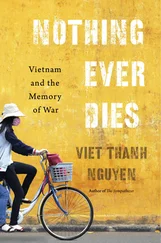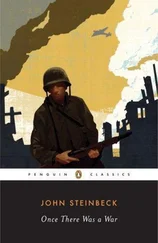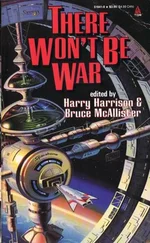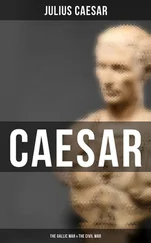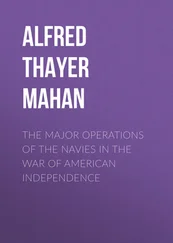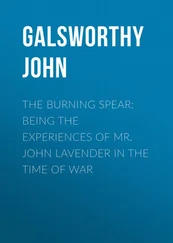As a character, Alden Pyle is an aggregation of some negative qualities that Greene evidently thinks are wrong with American culture. One presumed national trait is Pyle’s lack of any sense of irony, which often makes for comic misunderstandings between him and the ironic Fowler. Another is his preference for mythical history. Talking to Fowler about his first dog, “Prince,” Pyle tells him that he named the creature after the Black Prince,
“You know, the fellow who…”
“Massacred all the women and children in Limoges.”
“I don’t remember that.”
“The history books gloss it over” (72).
In the context of the climactic bombing episode, this allusion makes a moral as well as an historical point.
Another trait, Pyle’s political naiveté (he is hardly “innocent,” as often described by critics), leads him to place his hope in the Cao Dai sect, even though Fowler warns him that the French do not trust its followers. Pyle’s reply, that a “man becomes trustworthy when you trust him,” makes Fowler think that the reply itself “sounded like a Caodaist maxim.” Greene evidently intends for his novel to expose the dangers of so-called “American innocence” and the national preference for myth over history. Successful intervention in a foreign civil war depends on knowledge, as opposed to mere “intelligence.” The lack of knowledge, “innocence” (to quote Fowler) “becomes a kind of insanity” (162). In this reading, Greene’s novel is more an indictment of cultural ignorance and political shortsightedness that often results in dangerous national policies than simply a negative portrait of a well-meaning but misguided individual.
Accordingly, upon publication of his novel, Greene was widely accused of being anti-American. In one hysterical editorial, for example, the middle-brow magazine The Saturday Evening Post , characterized the novel as “Hate-America Propaganda.” Even the respected journalist A.J. Liebling, reviewing the novel in the highbrow magazine The New Yorker took Greene to task for America-bashing. 46Greene was accused by a number of people of believing that “America is the symbol of all that has gone wrong: materialism, godlessness, adult innocence, neutrality.” 47And yet Greene, whose anti-Americanism was political, need not be confused with his character Fowler, who finds certain aspects of American mainstream culture vacuous, a critique that, in any case, American writers and cultural critics—Mark Twain, Henry David Thoreau, Henry James, Ambrose Bierce, Edith Wharton, to name the most distinguished—have been making about their country since the nineteenth century.
Is confidence based on a rate of exchange? We used to speak of sterling qualities. Have we got to talk now about a dollar love? A dollar love would, of course, include marriage and Junior and Mother’s Day, even though later it might include Reno or the Virgin Islands or wherever they go nowadays for their divorces. A dollar love had good intentions, a clear conscience, and to hell with everybody (62).
The petulance here is Fowler’s, but that final sentence, with its suggestion of an independent foreign policy whose moral certainties disregarded the opinion of the rest of the world, was precisely how the US proceeded when it became involved in Vietnam. 48It should also be noted that Fowler is aware of his anti-American sentiments and their connection with his jealousy of his rival. In talking to Phuong, he confesses:
I began—almost unconsciously—to run down everything that was American. My conversation was full of the poverty of American literature, the scandals of American politics, the beastliness of American children. It was as though she were being taken away from me by a nation rather than by a man. Nothing that America could do was right. I became a bore on the subject of America, even with my French friends, who were ready enough to share my antipathies (138-139).
In another episode, however, Fowler’s anti-American antipathy is ill-conceived. At a Press Conference in Hanoi, “a too beautiful” French colonel is briefing the correspondents, weaving “his web of evasion,” but the loutish American correspondent Granger persists in asking why the colonel refuses to give out the number of French casualties: “Is the colonel seriously telling us…that he’s had time to count the enemy dead and not his own?” (63). Granger presses his questions and the colonel gradually loses his patience even to the point of accusing the Americans of not sending more material aid (which was the gist of General de Lattre’s complaint to Truman and Acheson when he visited the US shortly before his death). Fowler is critical of Granger’s “bullying voice” and behavior as inappropriate and aggressive, believing that Granger resented the colonel for not looking like “a man’s man,” as if the colonel’s beauty and the correspondent’s vulgarity are more relevant than their arguments. Granger’s personality aside, a more critical and aggressive American press corps early in the war might well have made it more embarrassing for US officials to weave their own web of evasion.
John Pratt argues that accusations of Greene’s anti-Americanism must be tempered by the favorable critical comment on the novel in a number of American periodicals. 49In the decade following publication, the novel was widely read and accepted by the American public, which by that time had a more realistic understanding of the American commitment. A more serious accusation was a factual one: the attack on Greene’s novel for being defamatory, specifically with respect to American responsibility for the explosion in the center of Saigon, in which (the historian Robert D. Schulzinger claims) the US was never proven to be involved. 50By way of reply, Greene, in his introduction to the 1973 edition of the novel, cites several hushed up incidents that implicate American Foreign Service personnel in terrorist acts. 51
One of the novel’s epigraphs is taken from Byron’s Don Juan (1819-24), every line of which is relevant to the American presence in Vietnam:
This is the patent age of new inventions
For killing bodies and for saving souls,
All propagated with the best intentions.
For new inventions, read dependence on technological weaponry; for saving souls, read “winning hearts and minds”; for best intentions, read “containment.” The novel is prescient at several points. Fowler’s description of what the French were up against in the north sounds very much like what the Americans would encounter in the south: “A war of jungle and mountain and marsh, paddy fields where you wade shoulder-high and the enemy simply disappear, bury their arms, put on peasant dress” (23). Civilian casualties and the omissions and false reports of the press, which kept the American public in ignorance about the real progress of the war later on, are also a part of the conflict represented in the novel. At one point, Granger candidly admits what reporting the war in northern Vietnam is like, a routine in which perceptions are carefully controlled by the French military:
I fly to Hanoi airport. They give us a car to the Press Camp. They lay on a flight over the two towns they’ve recaptured and show the tricolour flying. It might be any darned flag at that height. Then we have a Press Conference and a colonel explains to us what we’ve been looking at. Then we file our cables with the censor. Then we have drinks.” (34)
Fowler, on an unauthorized journey to Phat Diem in the north, realizes the impossibility of writing about the results of a guerrilla attack on the city, which he can see for himself: “Now after four days, with the help of parachutists, the enemy had been pushed back half a mile around the town. This was a defeat: no journalists were allowed, no cables could be sent, for the papers must carry only victories” (47). The expectation of contact is similarly frustrating. As Fowler waits anxiously for an attack to begin, two shots are fired and he thinks “this is it,” but the victims turn out to be only a woman and her six year old son: “ ’Malchance ,’ the lieutenant said” (52).
Читать дальше
